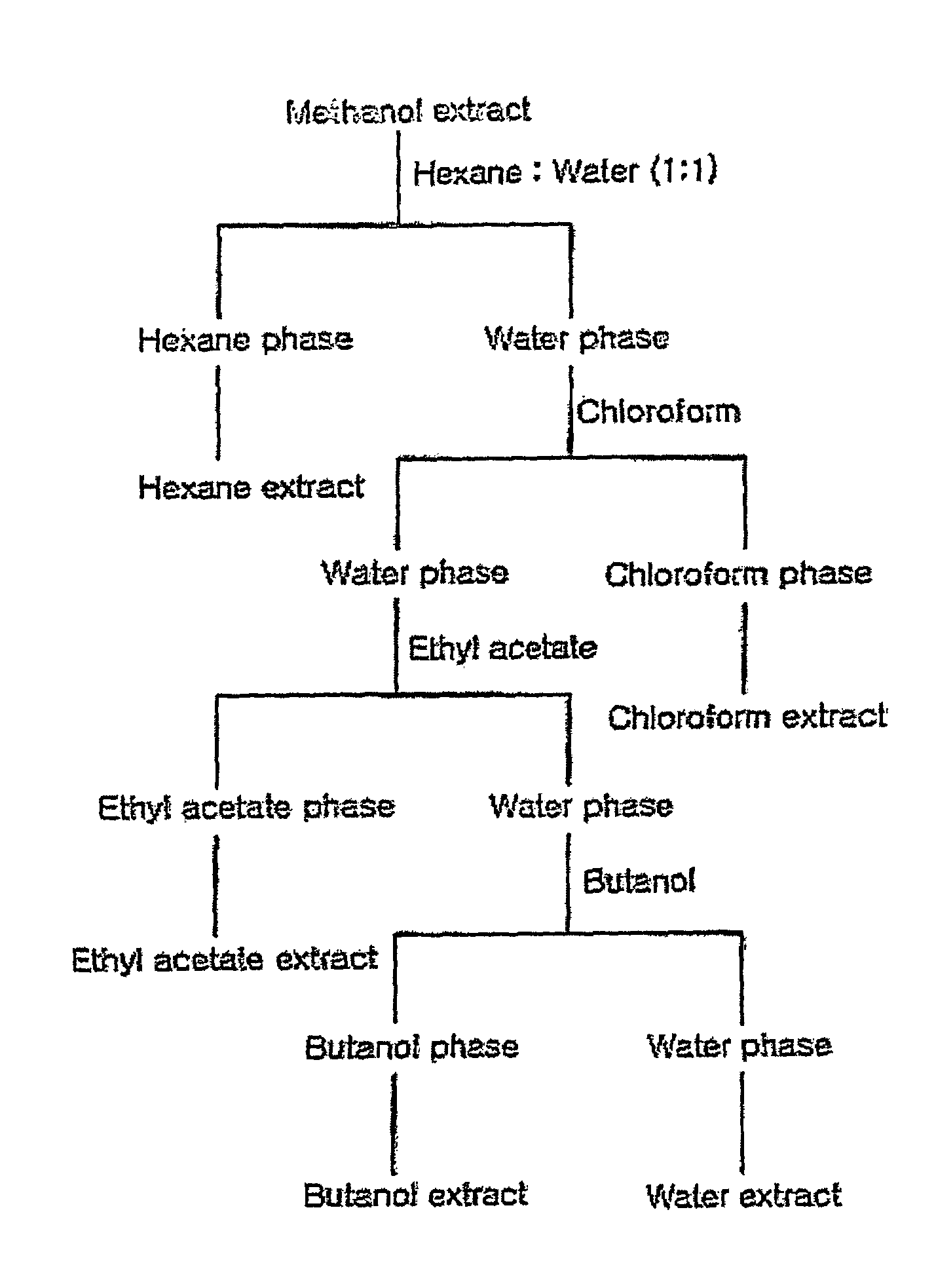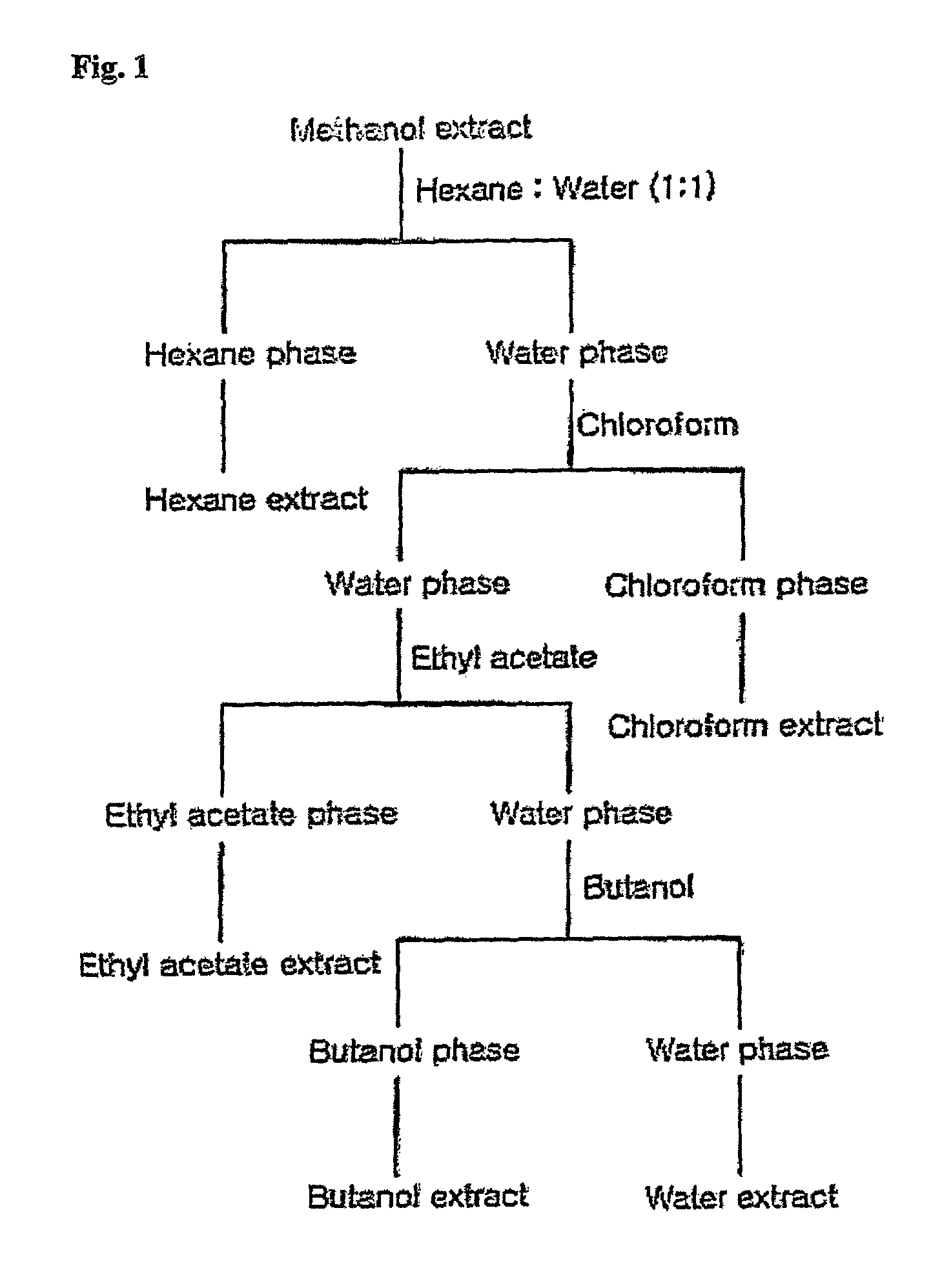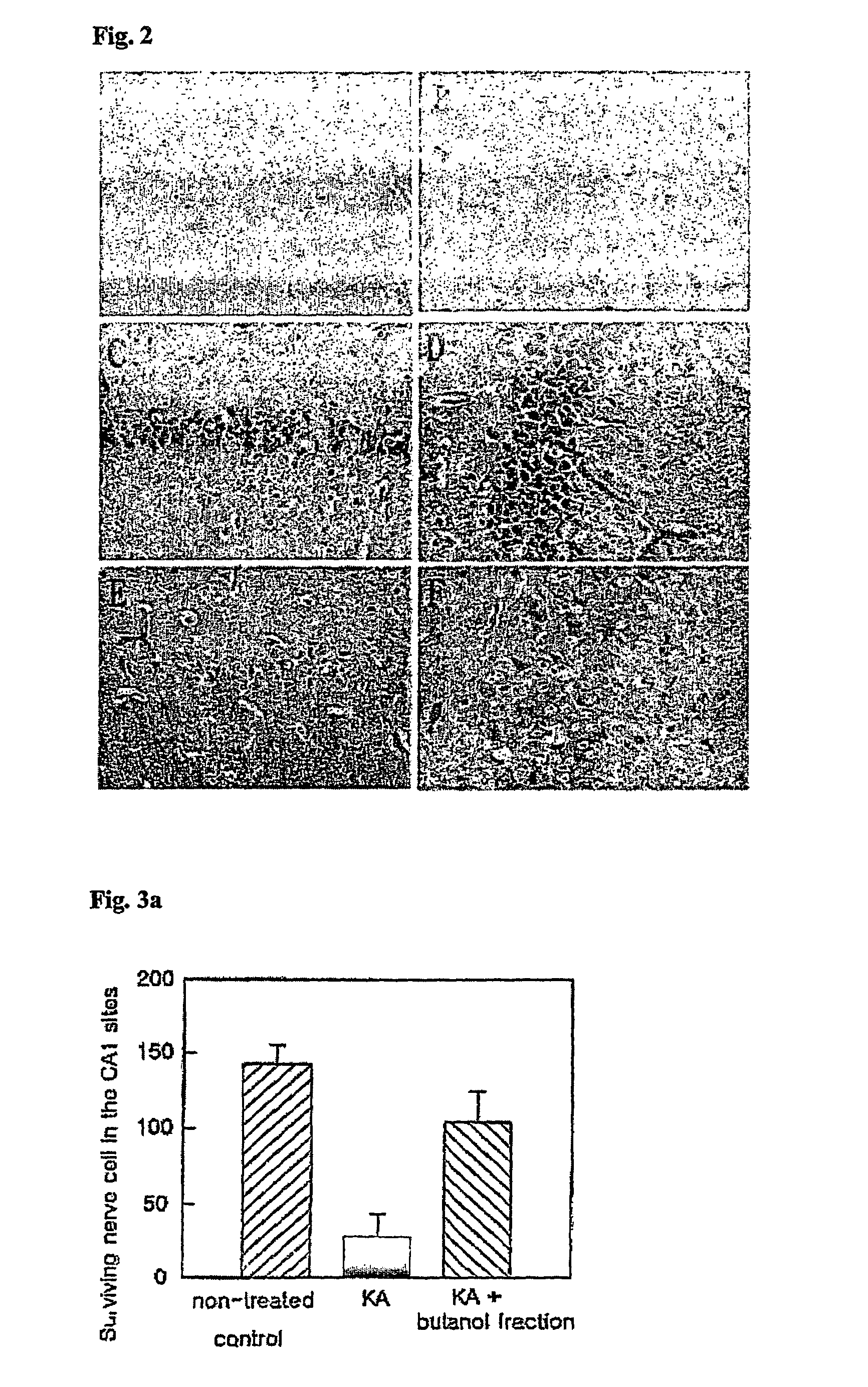Extract of petasites japonicus having neuroprotective effect and antioxidant activity
a petasite and antioxidant technology, applied in the field of extract of petasites japonicus and antioxidant for preventing and treating brain diseases, can solve the problems of direct brain damage caused by kainic acid, damage to nerve cells, and brain tissue susceptible to free radical attack, so as to reduce the activity of glutathione reductase, and reduce the amount of glutathion
- Summary
- Abstract
- Description
- Claims
- Application Information
AI Technical Summary
Benefits of technology
Problems solved by technology
Method used
Image
Examples
example 1
Preparation of Petasites japonicus Extract
[0045]Butterbur (Petasites japonicus) was dried in a dark place. Dried Petasites japonicus was ground. 500 g of dry Petasites japonicus was added to 5 l of 99.9% methanol and extracted 3 times in a dark room at 15° C. The resulting methanol extract of Petasites japonicus was concentrated in a rotary evaporator at 40° C. under reduced pressure to remove methanol and the residue was taken into distilled water. To the Petasites japonicus extract dissolved in distilled water, hexane in the same volume was added for phase separation and the hexane phase was removed. To the remaining water phase, ethyl acetate was added in the same volume for phase separation and the ethyl acetate phase was removed. To the remaining water phase after the ethyl acetate phase was removed off, butanol was added in the same volume for phase separation to obtain a butanol phase and a water phase. The resulting hexane phase, chloroform phase, ethyl acetate phase, butano...
example 2
Assay of Antioxidant Activity of Petasites japonicus Methanol Extract
[0046]In order to examine whether the Petasites japonicus extract according to the present invention has antioxidant activity, the extracts of Petasites japonicus with various solvents obtained from Example 1 was subjected to an in vitro experiment comprising treating the brain of a mouse with each f the extracts and measuring lipid peroxidation. Concretely, the brain of an ICR male mouse (22.5±2.5 g, 6 to 8 weeks old) was removed and washed with 0.15 M KCl solution containing 2 mm EDTA. The washed brain was ground using a tissue homogenizer (Teflon pestle). To 1 ml of the ground brain, 1 ml of 8.1% SDS, 2 ml of 20% acetic acid and 1 ml of 0.75% thiobarbituric acid (TBA) were added. The resulting mixture was boiled, cooled in ice for 30 minutes and centrifuged at 14,000 rpm for 10 minutes to obtain the supernatant. To the supernatant, 1 ml of each of the various solvent fractions of Petasites japonicus from Example...
example 3
Inhibition of Oxidative Neurotoxicity Induced by Kainic Acid
[0053]In order to examine the effect of the butanol fraction of Petasites japonicus which had been proved to have excellent antioxidant activity in Example 2 on neurotoxicity, an in vivo experiment was performed to analyze the effect on oxidative neurotoxicity induced by kainic acid (KA).
[0054] Assay of Fatality Rate, Body Weight, Neurotoxicity by Administration of Butanol Fraction of Petasites japonicus
[0055]Male ICR mice (22.5±2.5 g, 6 to 8 weeks old) were freely fed with solid feed for experimental animals (SamYang Co. Korea) in a polycarbonate cage (5 animals per cage). The mice were bred under conditions including a temperature and a relative humidity maintained at 23±3° C. and 60±10%, respectively, a light-dark cycle of 12 hours and illumination of 150 to 200 Lux. Only the animals which had been judged to be healthy during the acclimation period were randomly assigned to groups for the experiment. The breeding and ex...
PUM
 Login to View More
Login to View More Abstract
Description
Claims
Application Information
 Login to View More
Login to View More - R&D
- Intellectual Property
- Life Sciences
- Materials
- Tech Scout
- Unparalleled Data Quality
- Higher Quality Content
- 60% Fewer Hallucinations
Browse by: Latest US Patents, China's latest patents, Technical Efficacy Thesaurus, Application Domain, Technology Topic, Popular Technical Reports.
© 2025 PatSnap. All rights reserved.Legal|Privacy policy|Modern Slavery Act Transparency Statement|Sitemap|About US| Contact US: help@patsnap.com



